Are you passionate about making a difference in the fight against climate change? Our NGO is excited to introduce a comprehensive proposal aimed at enhancing adaptation strategies for communities most affected by environmental shifts. We believe that together, we can develop sustainable solutions that empower local populations and protect their livelihoods. If you're interested in learning more about our initiative and how you can get involved, we invite you to read on!
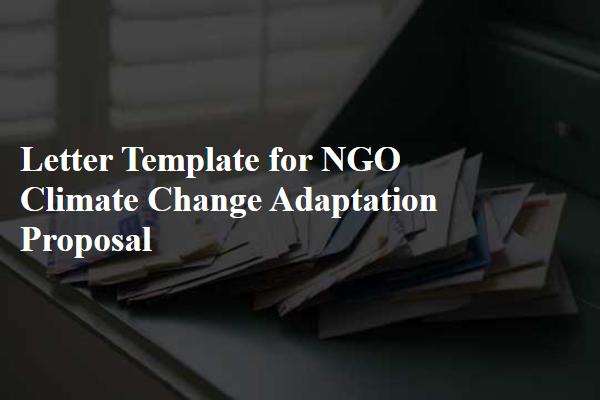
Clear project objectives and goals
A climate change adaptation project aims to enhance community resilience in vulnerable areas, particularly in coastal regions. Specific objectives include reducing flood risk by implementing sustainable drainage systems, such as bioswales, designed to handle increased rainfall events (historically exceeding 200 mm in some regions). Another goal focuses on developing agricultural techniques that withstand drought, which has affected local farmers with crop losses of up to 30% during dry seasons. Partnerships with local governments in areas like the Mississippi Delta will ensure that adaptation strategies align with existing environmental regulations and community needs. Educational programs will increase awareness of climate change impacts on local ecosystems, encouraging practices that yield sustainable development while protecting natural resources.
Detailed budget and financial plan
Developing a detailed budget and financial plan for a climate change adaptation proposal requires careful consideration of various components that ensure sustainable and effective implementation. Allocating funds for critical areas such as community engagement programs, infrastructure improvements, and monitoring systems is essential. For community engagement, allocate approximately $15,000 for workshops and training sessions intended for local stakeholders in vulnerable regions, specifically targeting coastal areas at high risk of flooding. Infrastructure improvements may include the installation of rainwater harvesting systems estimated at $25,000 for rural communities in developing countries. Monitoring systems, including the setup of weather stations, can require about $20,000 to collect vital data for ongoing assessments. Administrative expenses, including project management and reporting, may account for up to 15% of the total budget. Overall, the financial plan should project total costs around $100,000, ensuring transparency and accountability through regular audits and progress reports.
Evidence-based background and context
Climate change adaptation strategies are crucial for vulnerable communities, especially in regions such as Sub-Saharan Africa, where climate variability has resulted in droughts and floods impacting over 100 million people annually. The Intergovernmental Panel on Climate Change (IPCC) reports that average temperatures in this area have risen by approximately 1.5 degrees Celsius since 1900, exacerbating food insecurity and water scarcity. Furthermore, extreme weather events, including the 2020 West African floods--which displaced over 1.5 million individuals--underscore the urgent need for evidence-based policy interventions. Adaptation measures, such as developing resilient agricultural practices and improving water management systems, are essential to mitigate these risks. Local initiatives, backed by scientific research and community engagement, can enhance resilience and provide a sustainable pathway for economic growth amid changing climatic conditions.
Stakeholder engagement and collaboration
Engaging stakeholders in climate change adaptation initiatives requires an inclusive approach to build resilience within vulnerable communities. Key stakeholders include local government agencies, non-governmental organizations (NGOs), community-based organizations, and indigenous groups, all of whom play a vital role in identifying specific climate vulnerabilities faced by their regions. Collaborative efforts, such as workshops hosted in community centers, can foster dialogue, share knowledge, and encourage collective action planning. Regular meetings, possibly quarterly, with representatives from each stakeholder group ensure ongoing communication and adaptability to emerging climate data. Utilizing platforms like forums or digital spaces enhances broader participation, allowing for input from a diverse array of voices. Targeted outreach to marginalized populations ensures their unique challenges and solutions are integrated into the adaptation framework, culminating in a comprehensive and effective response to climate change impacts.
Monitoring and evaluation strategy
A comprehensive monitoring and evaluation (M&E) strategy is essential for assessing the effectiveness of climate change adaptation initiatives. This strategy should outline distinct climate indicators, such as changes in local precipitation patterns and temperature fluctuations, using established baseline data from regional meteorological stations like the National Weather Service in the United States. Stakeholder engagement is crucial; involving community members ensures that adaptation measures are culturally relevant and contextually appropriate. Regular progress assessments, conducted semi-annually, will utilize qualitative and quantitative data collection techniques, including surveys and focus group discussions. Key performance indicators (KPIs) must be defined to measure success, such as the number of community members trained in sustainable agricultural practices or increases in local biodiversity, fostering resilience within vulnerable populations. At the conclusion of the project cycle, a comprehensive evaluation will synthesize findings, enabling stakeholders to understand the impact on local ecosystems and communities while informing future adaptation efforts.
Letter Template For Ngo Climate Change Adaptation Proposal Samples
Letter template of climate change adaptation proposal for community resilience initiatives.
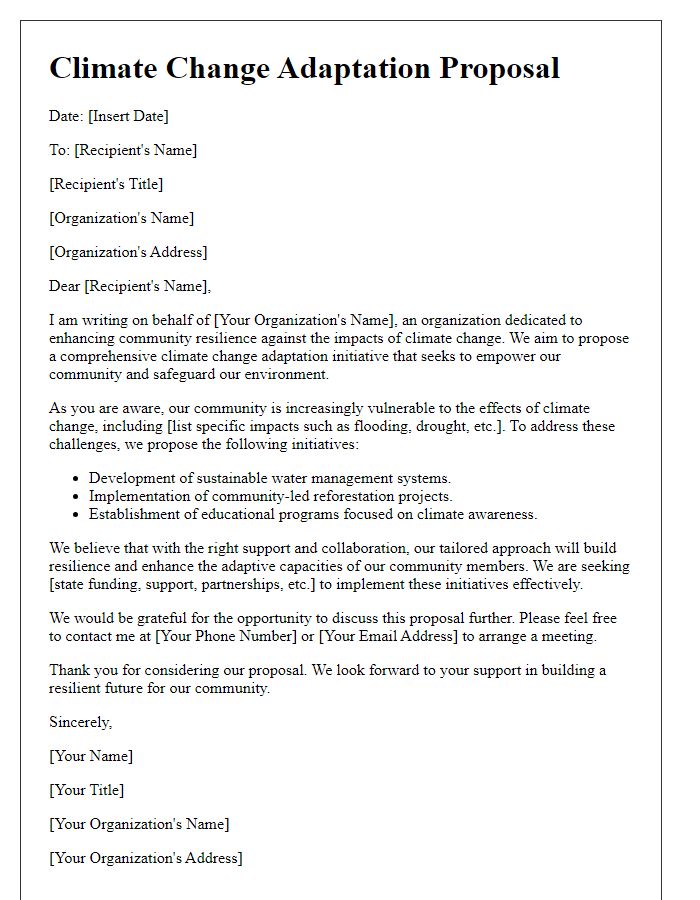
Letter template of NGO funding request for climate adaptation strategies.
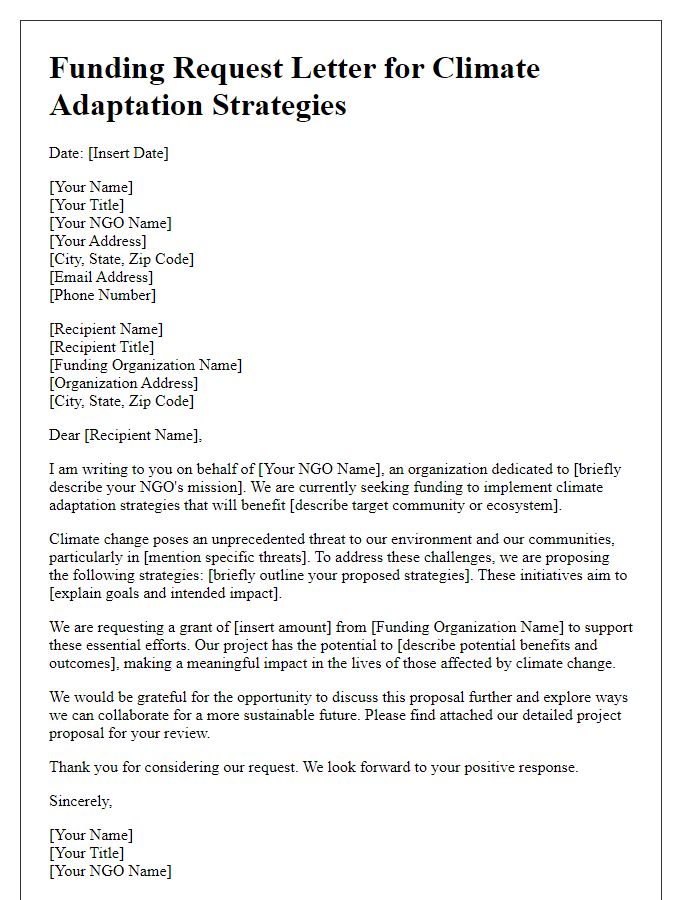
Letter template of project proposal for climate adaptation and sustainability education.
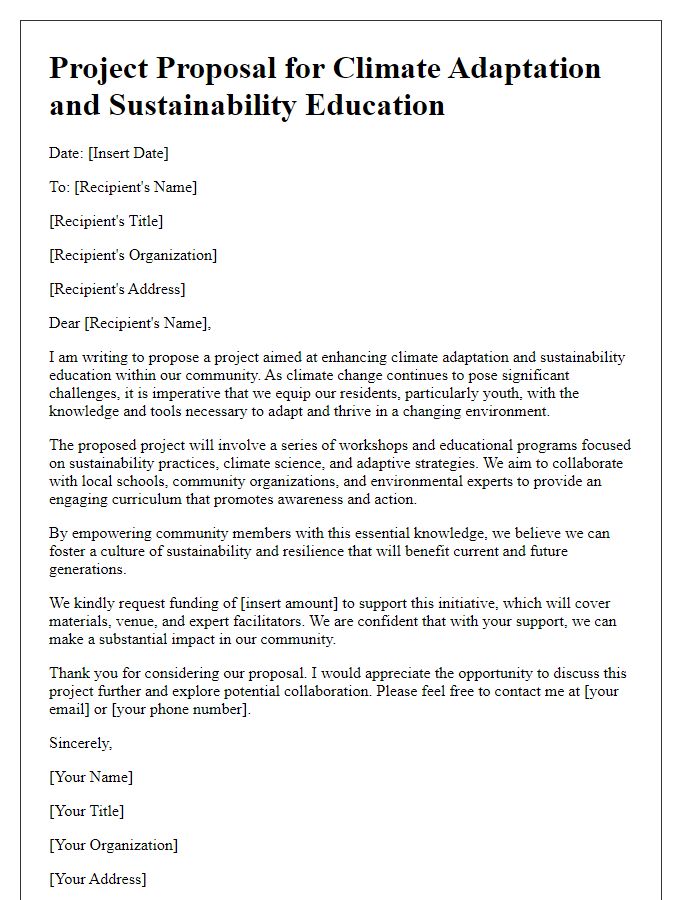
Letter template of partnership proposal for climate adaptation technology deployment.
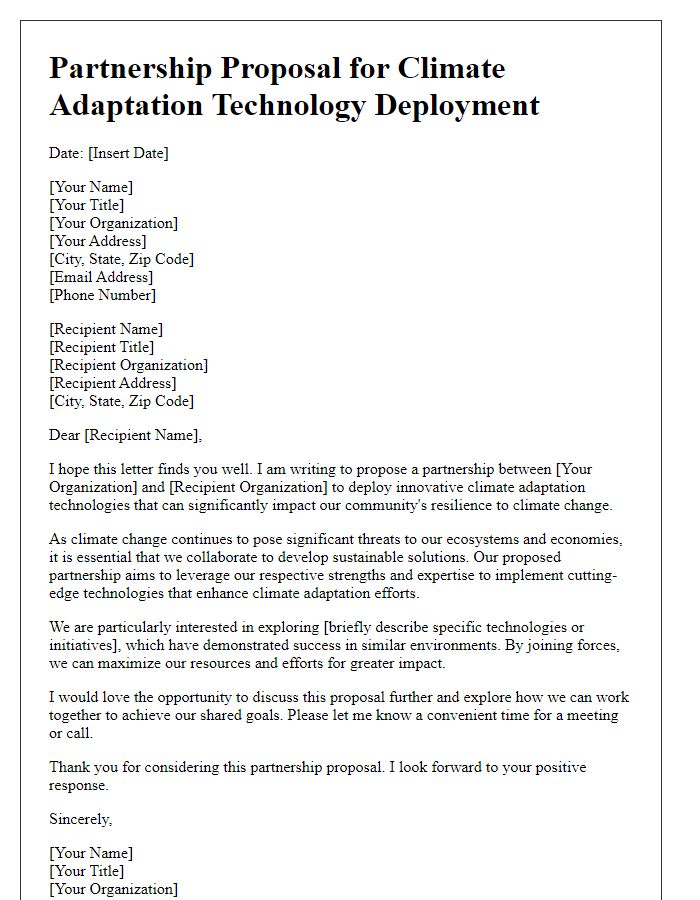
Letter template of advocacy letter for climate change adaptation funding support.
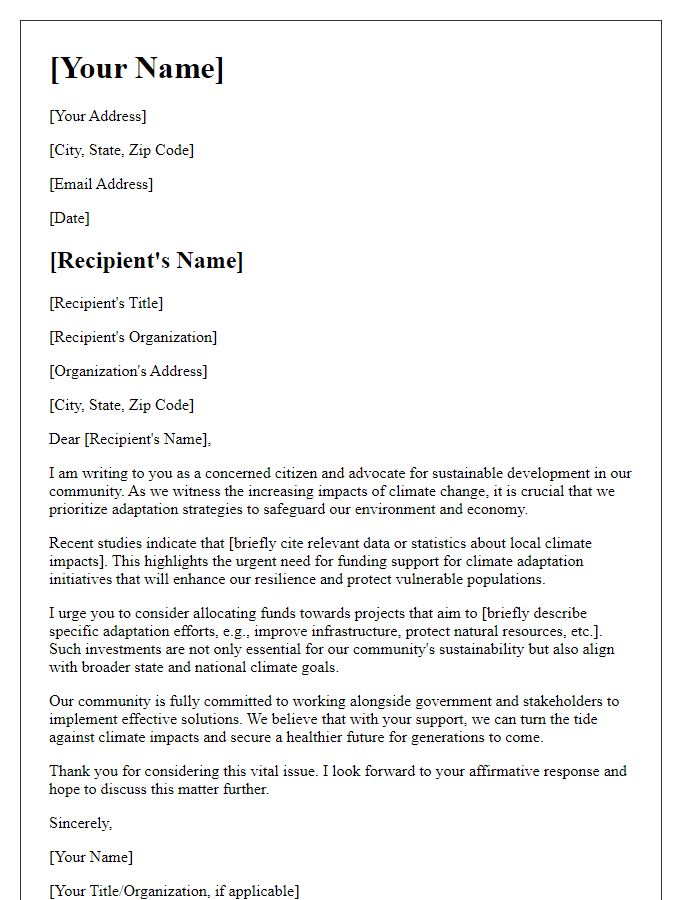
Letter template of volunteer engagement request for climate adaptation projects.
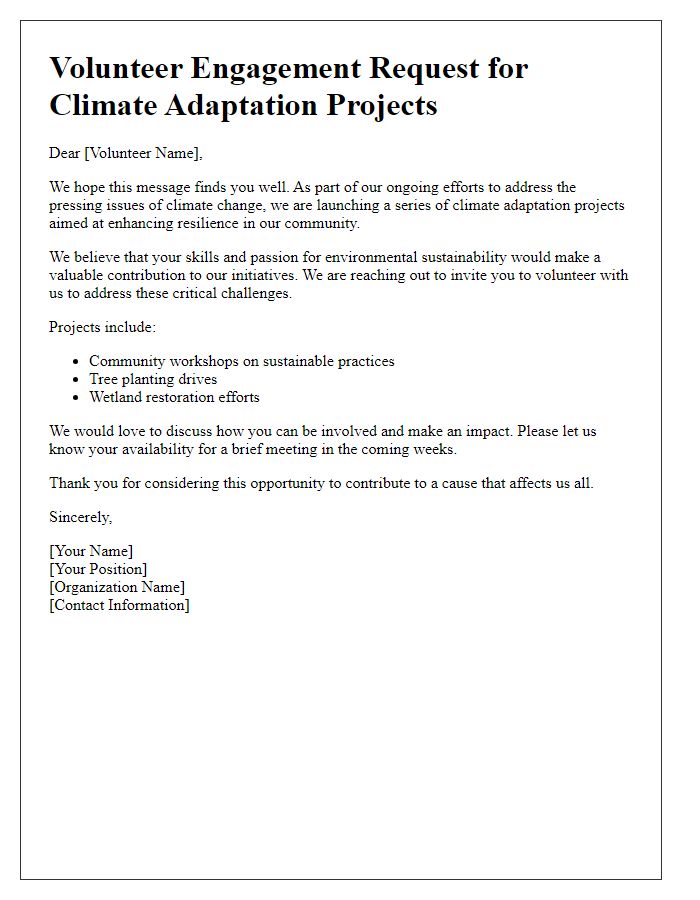
Letter template of grant application for youth-led climate adaptation initiatives.
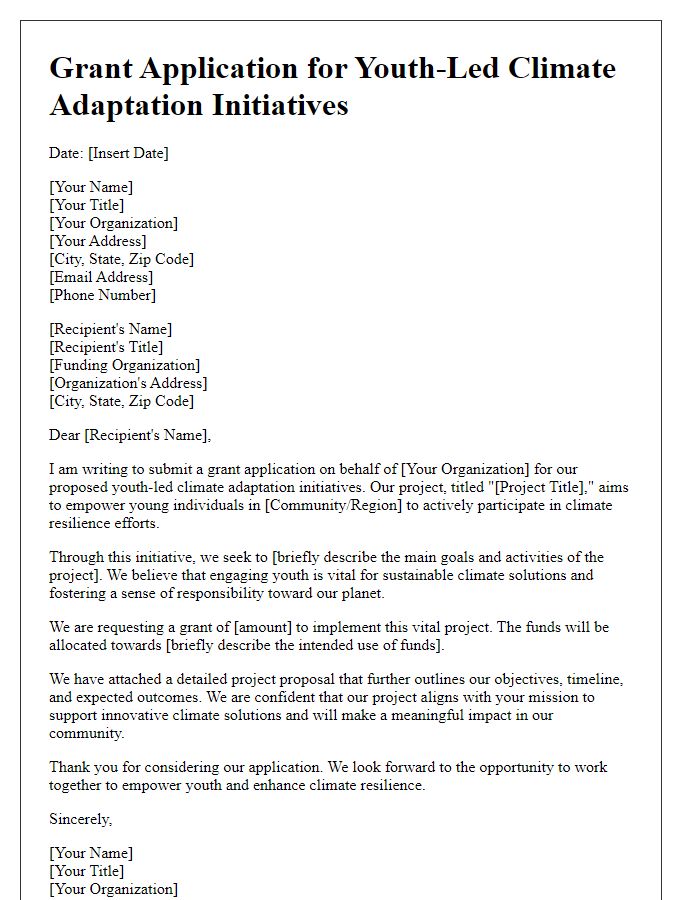
Letter template of outreach letter for local climate adaptation workshops.
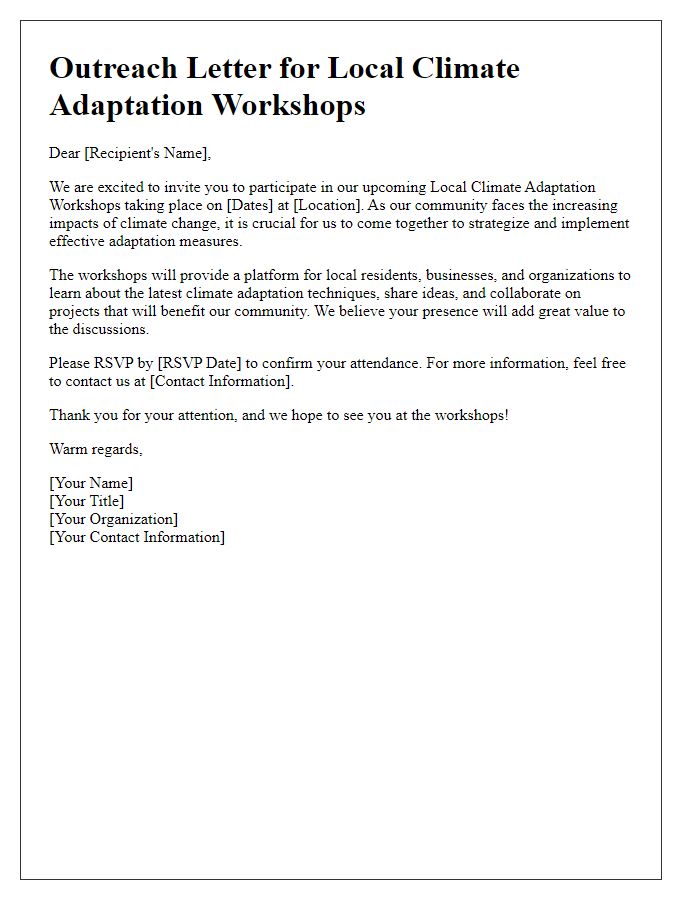
Letter template of research proposal for assessing climate vulnerability and adaptation.
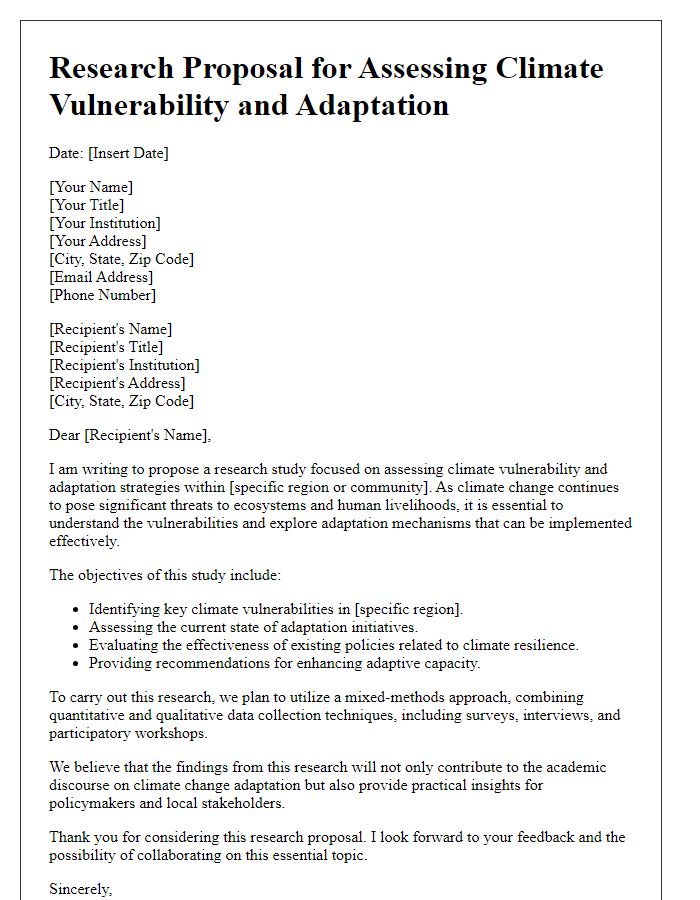

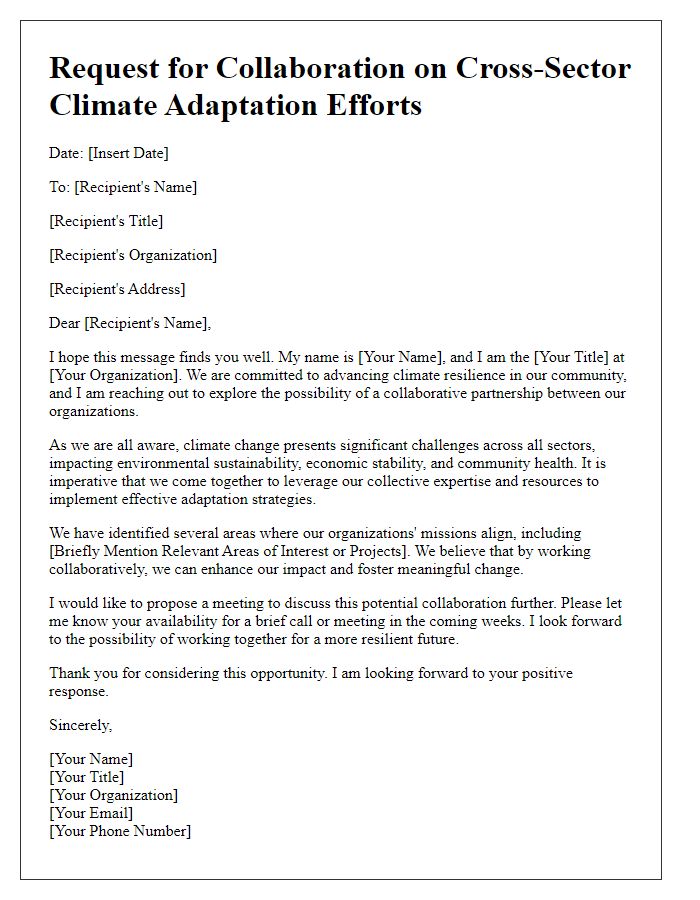

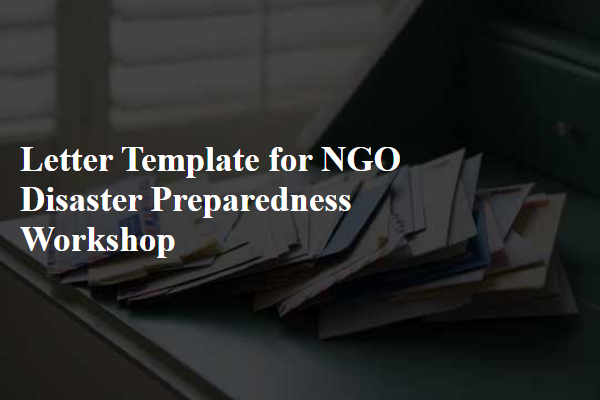
Comments